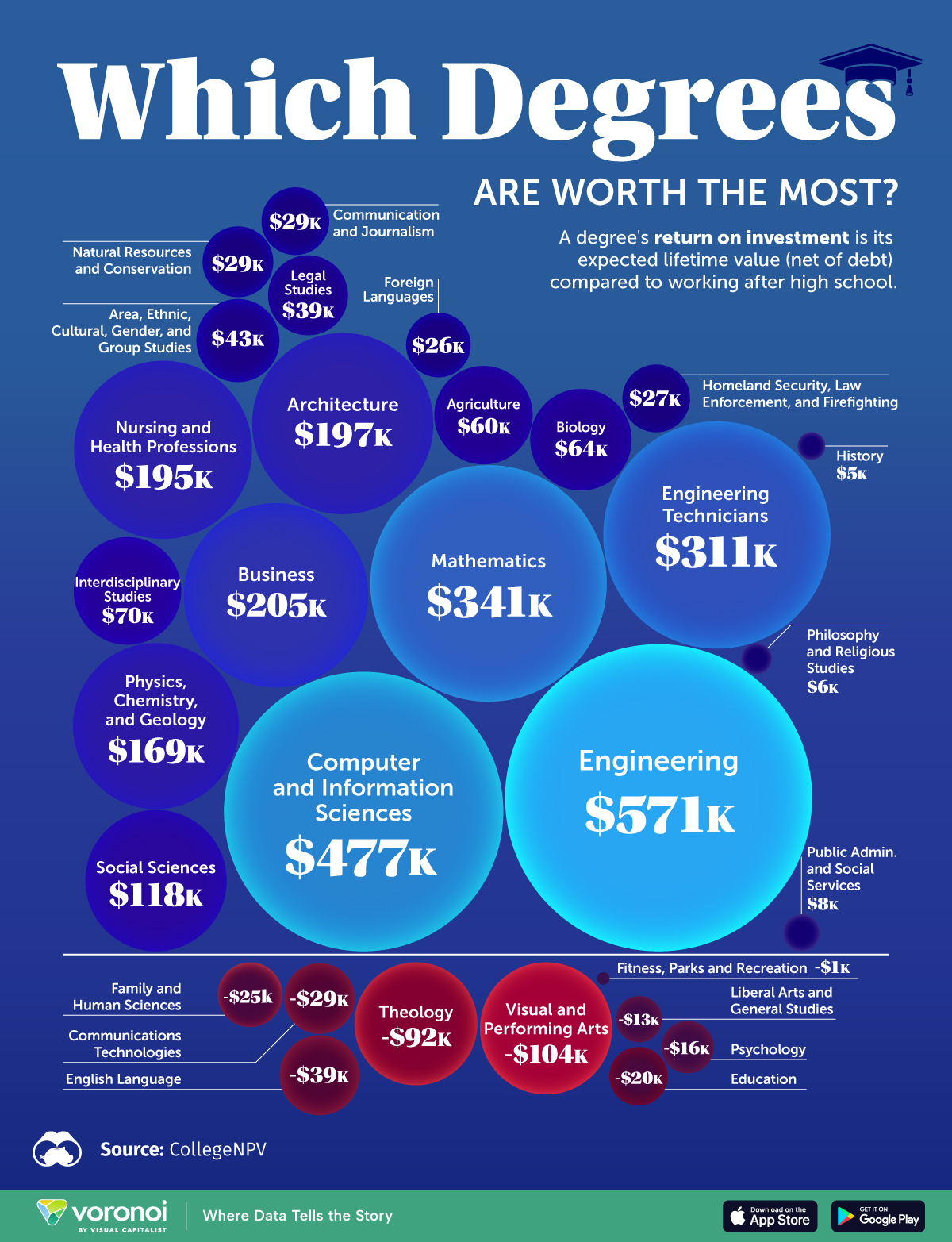
Career prospects, and especially expected lifetime salaries, can be a strong motivator or deterrent in pursuing certain college degrees.Not all degrees guarantee higher lifetime earnings compared to entering the workforce after high school without a degree—as some degrees may end up costing more than their financial benefits.This graphic shows the average return on investment of a degree in the U.S., based on analysis from CollegeNPV of data from the U.S. Department of Education and Bureau of Labor Statistics.The return on investment of a degree is the expected lifetime value of the degree (net of debt) compared to entering the workforce after high school.